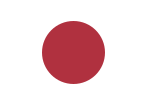Catholic University of Korea

The Catholic University of Korea (hangul : 가톨릭대학교 hanja : 天主教大學校) is a private Roman Catholic institution of higher education in South Korea. It was established in 1855. The Catholic University of Korea operates campuses in Seoul and in the neighboring Bucheon City. The university's medical school, considered one of the most prestigious in South Korea, has eight affiliated hospitals in major cities of the country. The university has been consistently ranked as one of the premier universities in South Korea and has been regarded in both national and international university rankings. The Catholic University was ranked no. 482 in QS World University 2022 Rankings. The Catholic University of Korea offers bachelor's degrees, master's degrees, and doctoral degrees: Theology, Korean Language, Philosophy, History, English Language and Literature, Chinese Language and Culture, Japanese Language and Culture, French Language and Culture, Music, Social Sciences, Social Welfare, Psychology, Sociology, Business Administration, Accounting, International Studies, Law Economics, Chemistry, Mathematics, Physics, Biotechnology, Environmental Engineering, Computer Science and Engineering, Information Systems Engineering, Culture Contents, Media Engineering, Clothing and Textiles, Food and Nutrition, Medicine, and Nursing.
Excerpt from the Wikipedia article Catholic University of Korea (License: CC BY-SA 3.0, Authors, Images).Catholic University of Korea
Changgyeonggung-ro, Seoul
Geographical coordinates (GPS) Address Phone number Website External links Nearby Places Show on map
Geographical coordinates (GPS)
| Latitude | Longitude |
|---|---|
| N 37.5859 ° | E 127.00433 ° |
Address
가톨릭대학교 성신교정
Changgyeonggung-ro 296-12
03075 Seoul
South Korea
Open on Google Maps





